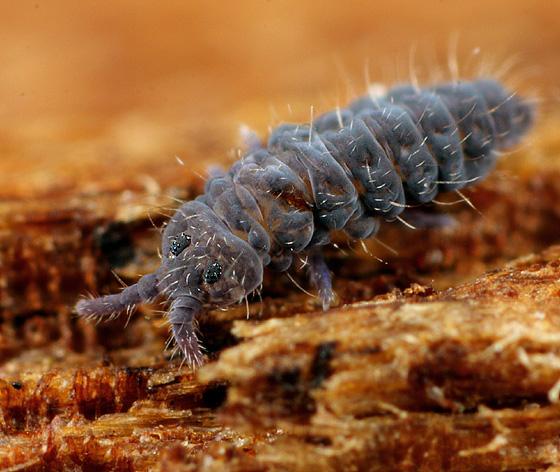Taxonavigation:
Regnum | Animalia |
Phylum | Arthropoda |
Subphylum | Hexapoda |
Classis | Entognatha |
Subclassis | Collembola |
Ordo | Poduromorpha |
Superfamilia | Hypogastruroidea |
Familia | Hypogastruridae |
Genus | Ceratophysella |
Species | Denticulata (Ceratophysella denticulata) |
Biology and behavior:
Ceratophysella denticulata is normally less than 1,5 millimeters (0,8-1,5mm) long, have six or fewer abdominal segments and possess a tubular appendage (the collophore or ventral tube) with eversible vesicles, projecting ventrally from the first abdominal segment. The Poduromorpha and Entomobryomorpha have an elongated body, while the Symphypleona have a globular body. Collembola lack a tracheal respiration system, which forces them to respire through a porous cuticle, to the notable exception of Sminthuridae which exhibit a rudimentary, although fully functional, tracheal system.Most species have an abdominal, tail-like appendage, the furcula, that is folded beneath the body to be used for jumping when the animal is threatened. It is held under tension by a small structure called the retinaculum and when released, snaps against the substrate, flinging the springtail into the air. All of this takes place in as little as 18 milliseconds.
Ceratophysella denticulata range:
Ceratophysella denticulata is widespread in Central Europe. Springtails are cryptozoa frequently found in leaf litter and other decaying material, where they are primarily detritivores and microbivores, and one of the main biological agents responsible for the control and the dissemination of soil microorganisms.
Diet:
The main diet of Ceratophysella denticulata various algae and fungi.
Reproduction:
Sexual reproduction occurs through the clustered or scattered deposition of spermatophores by male adults.
Állattan, Szerkesztette: Bakonyi Gábor - (főiskolai jegyzet)
